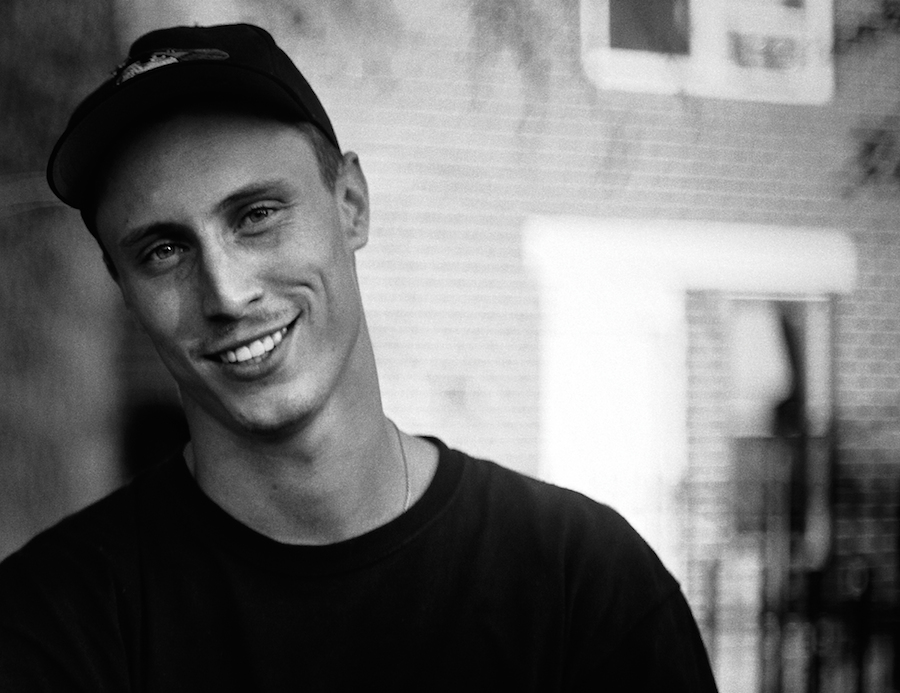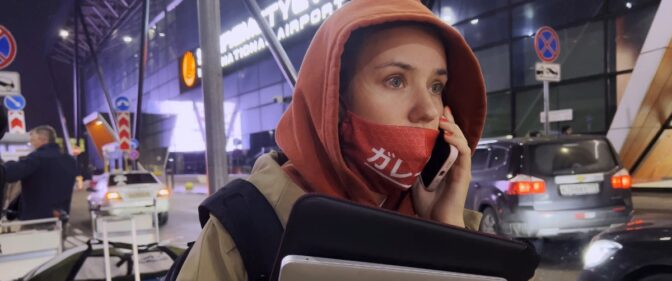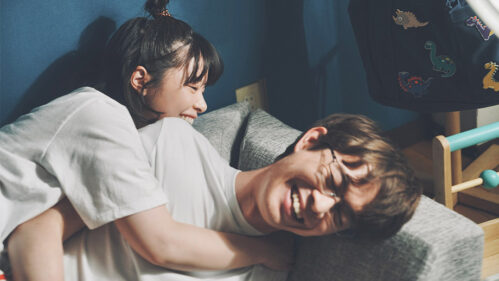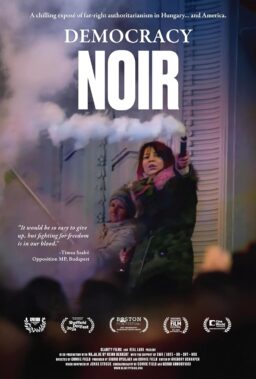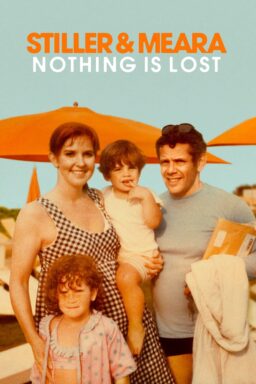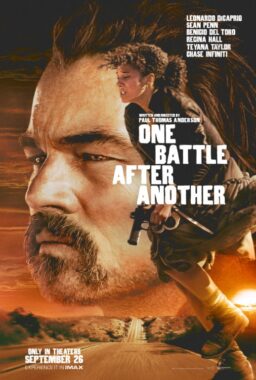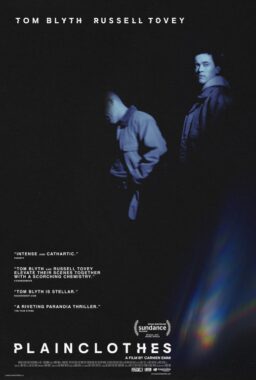Theo Anthony’s astonishing debut feature, “Rat Film,” proves that the deeper one digs into a particular subject, the more universal it becomes. The movie may be confined within Baltimore, but its revelations about the history of oppression in impoverished communities resonate far beyond the city boundaries. I saw the picture last month at Chicago’s DOC10 Film Festival, and said that it was destined to be recognized as one of the year’s greatest cinematic achievements. In my review, I wrote that Anthony “sports the sort of unslakable curiosity, keen eye for detail and razor-sharp intelligence that forms a great storyteller.” He finds endlessly provocative ways to juxtapose the history of Baltimore with the emergence of rats in urban areas, charting how segregation moved to the private sector while forcing black and minority home owners into poor neighborhoods. The film is infuriating, provocative and thrillingly audacious, cementing Anthony’s status as a major new artistic voice. Now that “Rat Film” is playing at Hot Docs, it is guaranteed to earn more well-deserved acclaim.
On the day of the film’s DOC10 screening, I spoke with Anthony about his approach to subverting the form of documentary filmmaking, his master class with Werner Herzog and the extraordinary initial reaction of Baltimore residents to the picture.
What initially drew you to documentary filmmaking?
As a kid, I was always curious about things and had fun researching them. I come from a science background, and thought I was going to be studying theoretical physics when I got to college. I was really into string theory and I liked math a lot. But once I was in college, I realized that it wasn’t right for me, so I gravitated more toward photography. Starting in high school, I was making skate videos and funny commercials with my friend Ben Goodman, who is now a cinematographer in L.A. I would watch him edit the footage at the computer, and I eventually wanted to learn how to do it on my own. So I taught myself how to use the camera and how to edit in Final Cut. Making music videos was helpful because it allowed me to edit to the rhythm of the song. In college, I made unofficial music videos and sent them in to artists who ignored me. I just kept pestering them until I got them to post it, or I sent them out to blogs, saying that they were official music videos. Then they posted them and it forced the artists into accepting the videos.
After graduating, I moved to New York and thought I was going to become a music video director. I started looking at fashion companies and did some videos for them, but I didn’t like the fashion world at all. New York just made me feel bad. It has this whole hierarchy of people in power and you can’t help but place yourself in relation to that hierarchy. It’s designed to make you feel bad, because you’re never going to be big enough or rich enough or famous enough, and friends are always going to be getting jobs over you. A girlfriend that I was seeing at the time was moving to Rwanda, and we wanted to find a way for us to be together, so we pitched a show to Vice. I had done some experimental narrative work in college, but had never made a documentary before. I ended up in the Congo for five months working as a freelance producer, and that’s pretty much how I started in documentaries.
Your short films, “Chop My Money” and “Coffin Maker,” were both made in the Congo.
I consider “Chop My Money” my first short film. It’s the first one of mine that ever screened at a film festival. It premiered at TIFF, which was a total shot in the dark. While I was in the Congo working on a couple projects for Vice, I spent a month living with Russian pilots, who were the subjects of the series that we had pitched. One by one, all these stories that we were supposed to be pursuing fell apart. There were all these stories that I wanted to do and the formula of Vice wouldn’t have allowed me to tackle them in the way I had wanted. I was struggling a lot with my own place there. I knew that I was extremely naive and I was very clumsily trying to find my voice. Both of those films, especially “Chop My Money,” grew out of my need to push back against a lot of issues of representation that I saw there, as well as issues with how I saw myself representing people. Those experiences in filmmaking were very formative for me. I saw that I could make documentaries that don’t really look like documentaries and incorporate so many ideas that I had from narratives and from my writing background. I didn’t go to film school. I studied Creative Writing and Cinema Studies at Oberlin College, but they were more theory-based.
As a Baltimore resident yourself, is this film an accumulation of things you have absorbed from living there, or is there a certain thread you found that led to everything else?
I wanted to use Baltimore as a formal boundary to see within that frame what picture I could make. This film really could’ve been made about any place with a rat infestation or with a history of racist housing policies, which is really any city in America. The idea that you could have this arbitrary frame of Baltimore and within that, tell a very universal story was something that I was interested in. I was worried that this film would get lost in a hyper-specificity and become just a quirky history of Baltimore. Very quickly, I’ve found that people have connected with the film all over the world. The whole project started with me questioning my assumptions. You build up all these assumptions about the city where you live, and you don’t ever question them.
Though I began making the film with some specific interests in mind, what really drove it was an earnest attempt at trying to understand why the city looks the way it does. On the left-hand side of a street in Baltimore, there are multi-million dollar homes, while on the right-hand side of the street, there are boarded up row homes. It’s that drastic of a division. On your left and on your right are two entirely different tax income brackets, two entirely different life expectancies and two entirely different education levels. When you are white and privileged, there are certain areas in Baltimore that you’re not supposed to enter. You have these routes you’re supposed to take, but they’re not spoken about. When you start to look at why these boundaries exist, you realize that they are not accidental. These things are intentionally planned, meticulously mapped out and masterfully enforced at every level of government.

That same visual juxtaposition can be seen in the footage of Flint, Michigan in Michael Moore’s “Roger & Me,” which follows an evictor whose kindness is similar to that of the pest-control worker, Harold Edmond, in your film.
The film really started with the shot of the rat in the trash can. That was the first thing I ever shot for the film. My friend Matt Porterfield, who is also a Baltimore filmmaker, talks about this idea of an entire film being encoded in an image, and that is what that shot of the rat does for my film.
We learn via voice over that the trash can is two inches higher than the height that a rat can jump, thus keeping the rodent in its place.
Exactly. I came home from the bar one night and it just seemed really serendipitous to find the rat there. After that, all these other things just started to line up. The uprising happened, and that caused people to think about Baltimore as a place and the history of the place. I found an article in the Baltimore Sun that was about the Rat Rubout team, and how they were implementing some rodent technology from Chicago in Baltimore. I was so amazed that this team, which only had eight people at the time, was responsible for all of the public rat eradication in Baltimore, and I knew right away that I had to go meet these guys. I went there five times and filmed with three or four different characters. They were all so great and I wish I could’ve put them all in the film, but it was Harold who made the final cut. He was reticent to come forward at first, but as soon as I gave him a platform, he was eager to tell his story. It wasn’t that he had been waiting to tell his story, but he just had all this experience loaded in him, and we gave him a chance to share it. He is so charismatic, so funny, so lively and casually philosophical at all times. During the edit, I realized that he is the heart and soul of the film. He lends it this incredibly human face that the voice-over and the other formal strategies are trying to sabotage.
The icy narration by Maureen Jones mirrors the indifference of Baltimore towards its own citizens in neighborhoods of cyclical impoverishment. She reminded me of a female HAL 9000.
Yeah, that was the direction we wanted to take. I love the idea of a human being made robotic. I really hate voice-over in general, but over the past two or three years, I started getting into the films of Chris Marker and Harun Farocki in particular, who is probably my favorite filmmaker right now. Their use of voice-over is very different from the Ken Burns subjective sort of voice. Voice-over can be used to inject doubt and suspicion and poetic intrigue into a story that subtly undermines any sort of objective narrative being put forth. When I was editing “Rat Film,” I was living alone in the woods for two months in a residency called Yaddo. They put you up for free and serve you three meals a day and you don’t have to worry about anything but getting your work done. I was writing to the edit and realized that I needed a voice to use. I don’t like the sound of my own voice and it just didn’t feel right, so I typed up the whole script and put it through Siri.
I thought Siri should be the narrator because I loved the distancing effect of her voice. It has a definite sci-fi tone. She’s using a cool, clinical voice to describe these vast horrors of policy that have had the most horrific effects on society. It almost forces you to adapt the logic of the oppressor. I wanted to juxtapose it with the subjective faces of people like Harold, so that the audience would feel an estrangement that amplifies empathy. I really think the distancing effect enables perspective. The use of Siri made it up until the final cut of the film, but then halfway through, it just got to be too much. It was too slow and it wasn’t right, so I looked for a human replacement. We found Maureen Jones on a voice-over actor casting site. I’ve never met her or seen her. Our conversations were all over Skype, and her voice was such a finely tuned instrument. The role forces her to push back against all of her training for being warm, being genuine, being assertive. We didn’t modify her voice at all, aside from taking out breaths. There was no filter applied to it. It is all human performance.
My favorite sequence in the film is the satellite view of Baltimore, where you contrast the more comforting abstract view of the street with the limitations of the photographic setting.
When I was editing in the woods, I realized that I needed more B-roll of Baltimore, and that I couldn’t get it for a number of reasons. So I just started spending hours and hours on Google Maps, wandering through a city that I felt estranged from at the time. I found that it was a really apt and poetic method of interfacing with my own role as a filmmaker and a consumer of these different histories. It’s interesting to think of the different modes within the map and what different perspectives they enable. When everything is abstract and cartoonish, you are this free-floating point that can go anywhere. It’s the ultimate wet dream of the vérité filmmakers to be like Emerson’s “transparent eyeball,” which is a really problematic perspective.
When you assume the role of this body-less floating point, you can float around and act like you don’t exist. You feel like an inert force in the world, but as you know, cameras have bodies, and the people who are manning those cameras have bodies too. They have been used historically to very violent ends—“othering” people and categorizing people in order to keep them in their place—and I thought that was reflected in the map sequence. When you switch to the photographic mode, all of a sudden, you can’t fluidly navigate the map, and it becomes a lot more complicated. I loved indulging in the different freedoms and limitations of both perspectives, not just within the map, but also within the film, contrasting sequences like this with the very subjective on-the-ground approach of a roving filmmaker. All of a sudden, you take a step back and realize that in this film, I am creating a map that is subject to its own arbitrary boundaries and tunnel vision and biases. It was a really uncanny way of exploring a city that you know so well.

Werner Herzog has been cited as your mentor. How has he served as an inspiration for you?
It was when I started getting into documentaries during my time in the Congo that I first came across the films of Werner Herzog in a serious way. This was about four or five years ago, and I totally devoured his films. He’s got such a strange way of looking at the world and he’s infinitely curious. He became a big hero of mine and I straight-up idolized him. So I applied to his rogue film school, which is sort of like a four or five-day master class with him. You submit your film and he hand-picks 30 or 40 people to meet him at a secret location. It can be in L.A. or New York, though it was New Jersey one year, and London another year. Each day, you spend nine or ten hours in a room with Werner Herzog face-to-face. He’s not there to just lecture, he takes the time to watch your film. On the first night of the class, he goes around and introduces himself. He looks you in the eye, remembers your film and says something specific about it, not just what he liked but what he didn’t like, and his words are very honest. For the class, I showed him “Chop My Money.” There were times he would show clips from his films and deconstruct them, telling us how he got certain shots. It was like a live director’s commentary, with people getting to ask him questions throughout it. I think about certain things he said during that period every day of my life, and that’s not an exaggeration.
Ironically, I don’t even know if I would recommend the class, because he doesn’t really tell you anything that you don’t know, just in terms of production. Everything that you need is in yourself and no one’s ever going to give you something you don’t have already. The class encourages you to have an infinite curiosity about everything you see. It’s not about making films, it’s actually a way of living. It’s important to be skeptical of the world and critical of the structure of it, while trying to find really strange entry points into all these different things that we take for granted. Werner is a big advocate of walking, and walking the city of Baltimore is what inspired me to make “Rat Film.” You just see so much. When you’re in a car, everything goes by so fast and becomes abstracted. When you are walking, you actually have time to engage and to process. Werner brought together 30 or 40 of the most talented filmmakers, and I still keep in touch with some of them. We have a Facebook group, and it’s like a support group. You could see his eye in every single film that he chose. You had everyone from 20-year-old animators to 54-year-old quantum physicists there. It was a really cool gathering of people. So yeah, I would recommend it, but I would also say you don’t need it. What stays with me is the pure drive of curiosity that Werner advocates. That is what keeps me connected to the world.
How did you approach the process of editing the film?
The editing room is a very sacred laboratory to me where happy accidents occur all the time. It was in editing where so much of the film came together. I knew what I wanted the film to feel like, and I knew the pacing and the frenetic energy that it was going to have. I think the final product is very much faithful to how I had conceived it. If production is scouting the territory, editing is making the map. The map and territory are two different things, especially when you realize that you are making a film about maps. All mapping is subject to criteria that in themselves are very subjective markers or pillars. You can have a totally different map if you have different pillars or criteria of what to show or what not to show. The politics of the frame is everything. All these connections between the abstract concepts and the boots-on-the-ground subjectivity is what emerged in the editing. That’s when I discovered what I want my films to accomplish, which is linking our own subjective concrete experience to these abstract patterns and ideas and historical threads.
I feel really free in this form. I was always judging my success based on prior films and what I’ve been taught, and it’s felt really good to just be like, “No, this is how I think and this is what I’m going to do.” I could take a similar approach to narratives, though I’m not particularly interested in them. I have certain ideas for documentaries that break off into narratives and then come back, but for now, my approach is determined by whatever makes sense for the idea. Documentaries and narratives are separate fields. There’s been a problematic blending of them in Sundance hybrid docs that I’ve often joked has led to the rise of alternative facts. There has been a problematic strain of treating these hybrid docs with equal weight. I’m not a purist when it comes to that. There is a boundary that is very porous, dynamic and ever-changing, but to deny that the boundary exists is a really insidious, nihilistic act. For me, the most exciting work that I see being made right now are films that use both strategies to their maximum effect to comment on each other, to build on each other and to sabotage each other. One of my favorite films this year, “Casting JonBenet,” does a really cool job of doing that. You come in with your expectations of what a documentary or a narrative is, and the film calls you out on all the hypocrisies and all the false morality that plays in to these different structures.
In fact, there are elements of narrative filmmaking in “Rat Film.” The whole rat fishing scene is staged. Those guys aren’t rat fishing every week. They had never been rat fishing before. Those scenes are based on a very real event that we revived for the purposes of the film. There was a rat fishing competition back in the ‘90s at a bar in Fells Point. Whoever caught the biggest rat won free drinks. PETA shut it down and it became a folk tale in Baltimore, so we just brought it back. The actor we chose for the film also happened to be a fisherman, so I asked him to take his skills and apply them to rat fishing. The whole thing was improvised, but it was a documentary in the sense that we really were figuring out how to go rat fishing. When you see him putting the peanut butter on the bacon, he’s totally ad-libbing it. Will Kearney did a fantastic job. It was exciting for me to slip in a myth that sort of destabilizes the whole film.

Another essential aspect of the film is the score by Dan Deacon, which immediately gets under the viewer’s skin.
Dan believed in me and this project from the beginning. Some of my earliest and best memories of music are seeing his shows when I was 15 years old. He’s like a legendary figure, and he’s become a great friend of mine. At a time when no one knew what I was doing or why I wasn’t going out or why I talked about rats every time I opened my mouth, Dan was one of the first people to say, “I really love what you’re doing. I want to be involved in this.” I remember him very specifically saying, “I want my music to your images.” As we started working together, we found that we have a very symbiotic, conducive working relationship. I assumed that we would play the movie and Dan would be playing on his piano or strumming on his guitar like Neil Young doing the live score for “Dead Man.” That’s not how Dan works at all.
He sets these initial conditions within an algorithm, presses play and chaos emerges. He captures it all and looks for patterns, structures and melodies in the chaos. It’s so cool to watch him work. He’s just a wizard in the studio and his approach is similar to how I work as well. You have these different pillars that are entry-points into the chaos and you’re just trying to find structures and patterns. He’d bring in a deleted track from his last album and it would work great in the film. Or he’d bring me his version of Harold’s theme song, and I’d be like, “This would work better for the red-lining section,” so he’d switch the instrumentation. A lot of the music was digital, but he did some cool acoustic stuff as well. It was just a really dynamic, fluid process. We had a couple fifteen or sixteen-hour days in the summer where we were in a room together, and in the fourteenth hour, we would have a breakthrough. Both of Dan’s parents are exterminators too, so it was a project very close to his heart.
Has this film screened in Baltimore?
We have not had any public screenings in Baltimore yet. Very soon we will be announcing some, which is really exciting. A lot of people are expecting this film. The word has gotten out and people are talking about it. We actually just had our first screening privately in Baltimore. I screened it for Harold and the Rat Rubout team and it was one of the most rewarding experiences of my life. I was so nervous about it because I hadn’t seen Harold in a long time. I had called him up a couple times and told him, “People all over the world come up to me and tell me how much they love you and are blown away by what you do,” and he’s just like, “Aw that’s alright man, that’s cool.” I wanted him to get an idea of how people have been impacted by the film, so I put on a private screening at the main municipal building in Baltimore. It is the main government legislation building, and we invited the Department of Public Works with their whole media press relations team, as well as the director of the DPW, who is the mayor’s right-hand man. They were seated alongside the Rat Rubout team, so we had the government hierarchy from top to bottom all in one room together. I tied a bed sheet to the ceiling and brought in a projector as well as some popcorn and snacks to make it feel like a theater. There were still wrinkles in the bed sheet, but we did what we could.
It was very tense going in to the screening. Harold saw all of his bosses coming in and he was like, “I really hope I didn’t say something to get in trouble.” I said, “Harold, please trust me. I did you right,” while thinking to myself, ‘I better have done him right.’ This is a real responsibility. Then all of the directors came up to me very nervously and tensely shook my hand while saying, “We are very eager to see your film. We have talked about it a lot.” It felt like a threat. [laughs] They were rightfully skeptical of me from the beginning. To have a screening of a film that is about the failure of government policy in the main conference room where those kind of decisions are made every single day felt like a really subversive act. The Rat Rubout people don’t ever see their bosses. They just know they have their manager, and it’s this whole bureaucracy where no one talks to each other. As soon as they found themselves in the same room, the Rat Rubout team started arguing across the aisle about their overtime. I figured I had to start the film immediately, and once it began, people were laughing and cheering. When Harold came on, the whole team was screaming for him. They were seeing their story and the larger implications of their story being projected before them, and they were so grateful. I have such a tremendous respect for how difficult their work is and how overworked and under-appreciated they are. Their type of struggle manifests itself in so many areas of any labor force.
I also saw the director of the DPW laughing, nervously at first. When it got to the map overlay sequence, the Rat Rubout team started chanting, “Layer it over! Layer it over!” When the film ended, I got up to start doing a Q&A. Instead of facing me, the two sides of the room turned and faced each other and started talking about the film. It turned into a town hall meeting where the Rat Rubout team was airing its grievances, while the people in managerial positions were explaining their own issues. Because of the one-way nature of bureaucratic communication, there’s never any flow of conversation, so this was a rare moment of connection. Afterward, the director came up to me and said, “Thank you for not throwing us under the bus. Thank you for showing how difficult and complicated this problem is. We’re going to get the mayor involved.” It was incredible to see something that I had made serve, even in this small context, as an exterior object by which two conflicting groups could begin relating to each other. That was in a room of thirty people, so we’ll see what happens when we start screening in Baltimore and in schools around the country.

